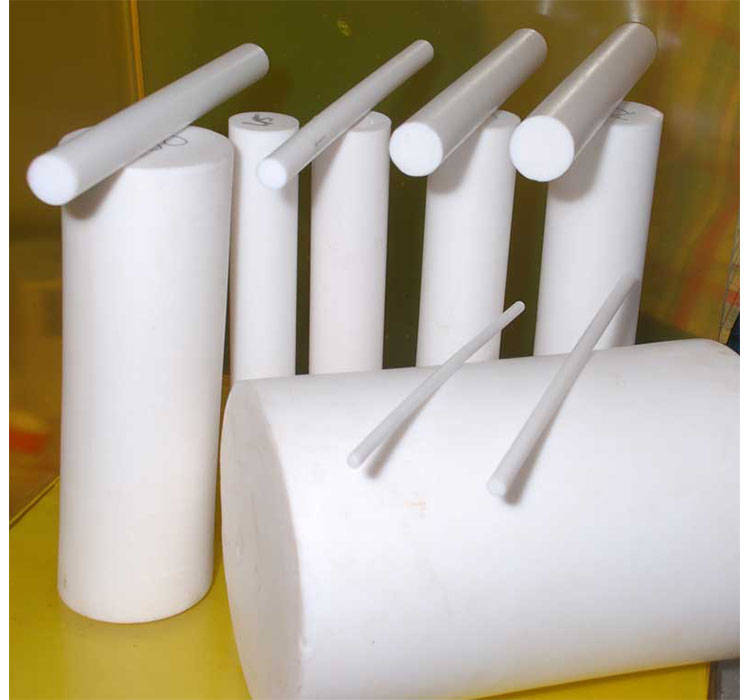Study on related properties of ptfe
- Properties of polytetrafluoroethylene modified epdm rubber
EPDM modified by polytetrafluoroethylene (PTFE) and nano silicon dioxide (SiO2) was prepared by vulcanization. Scanning electron microscope and infrared spectrum showed that PTFE and EPDM had good compatibility. DSC test showed that the composite had a unique glass transition temperature. When PTFE is added in 5 parts, PTFE and EPDM have a good compatibility. At this time, mechanical properties of epdm-ptfe reach the highest, and its tensile strength, elongation at break, hardness and tear strength are 22.42mpa, 588.91%, 82.0° and 49.60 kN/m respectively. Thermogravimetric analysis and aging experiments show that the aging and heat resistance of PTFE are improved. The mechanical properties of EPDM were also significantly improved after adding 5 parts of nano SiO2.
- Structure and properties of polytetrafluoroethylene hot-rolled fiber membrane
PTFE fiber membranes were prepared by hot rolling process and orthogonal design. Scanning electron microscope (SEM) was used to observe the surface morphology of the fiber membrane, and its thickness, permeability, aperture, porosity, tensile properties, acid and alkali corrosion resistance were tested and evaluated. The results showed that PTFE hot-rolled fiber film thickness was 0.12 ~ 0.15 mm, permeability was 80 ~ 101 mm/s, pore diameter was 14 ~ 17 ms, porosity was 14.57% ~ 27.04%, fracture strength was 38 ~ 59 N, elongation at break was 30% ~ 38%.In the 9 kinds of fiber membranes, there are still a lot of fibrous structures except the fiber melting on some surfaces. After acid and alkali treatment, the tensile properties of the fiber membrane remained unchanged. According to the orthogonal test results, the fiber mesh density has the greatest influence on the thickness, permeability, pore diameter and tensile properties of the fiber membrane, and with the increase of fiber mesh density, the permeability and pore diameter of the fiber membrane decrease, while the thickness and fracture strength increase.
- Structure and properties of polytetrafluoroethylene/polypropylene hybrid melt jet filter material
In order to extend the storage time of static charge on the surface of polypropylene (PP) melt-blown materials, the storage capacity of static charge was improved by organic hybridization. In the experiment, PTFE ultrafine powder and PP slice were mixed to granulate in a certain proportion, and different nonwoven materials were obtained by melt-jet molding process. The structure and performance of the nonwoven materials, such as apparent morphology, micropores, surface electrostatic potential and filtration efficiency, were studied, and external corona electret technology was adopted to make the material surface carry static charge. The test results show that adding PTFE can effectively improve the storage capacity of static charge of melt-jet PP nonwoven materials, and when PTFE mass fraction is 0.1%, the surface static voltage is the highest, the filtration performance is the best and the static charge stability is the best.
